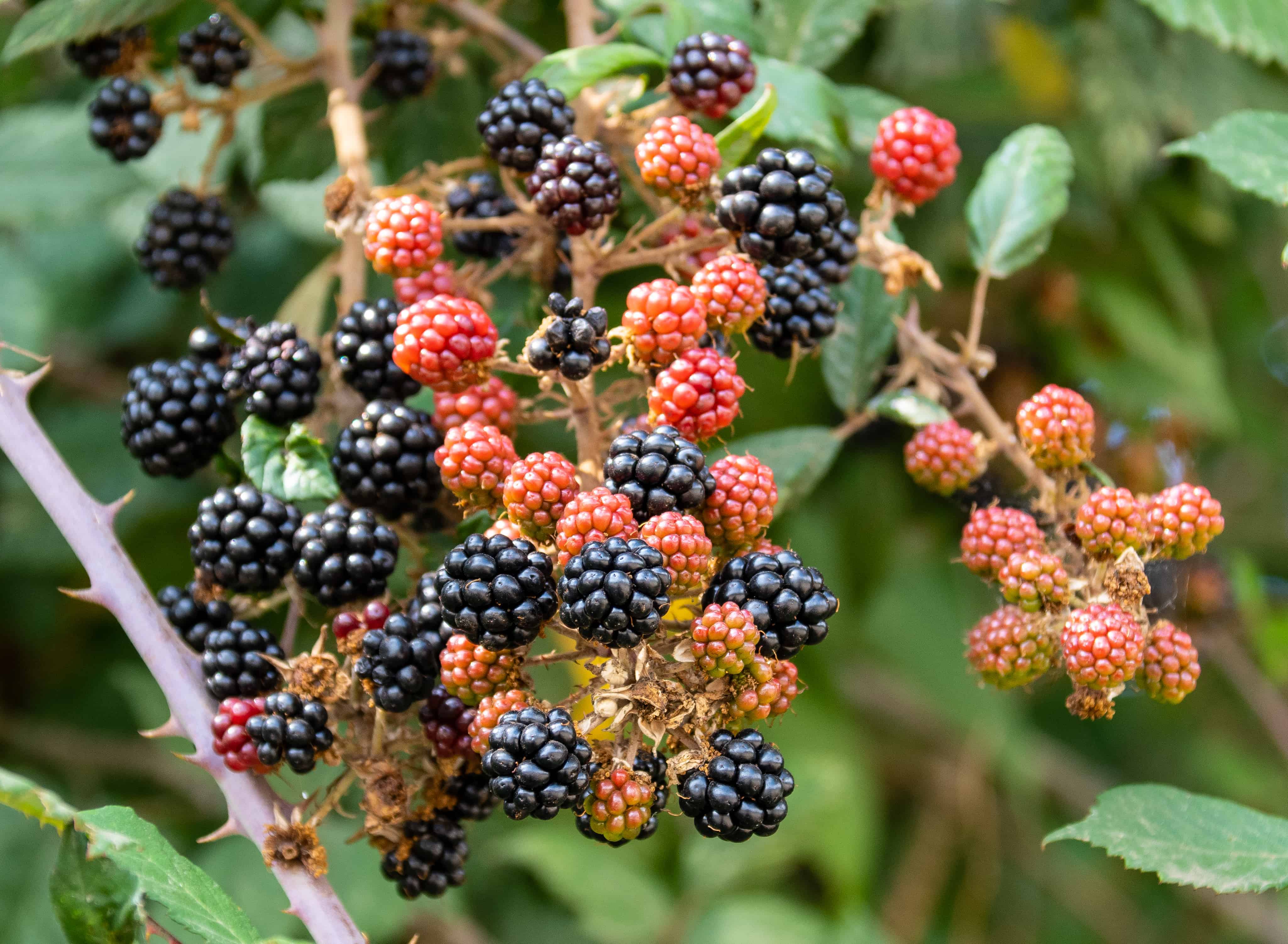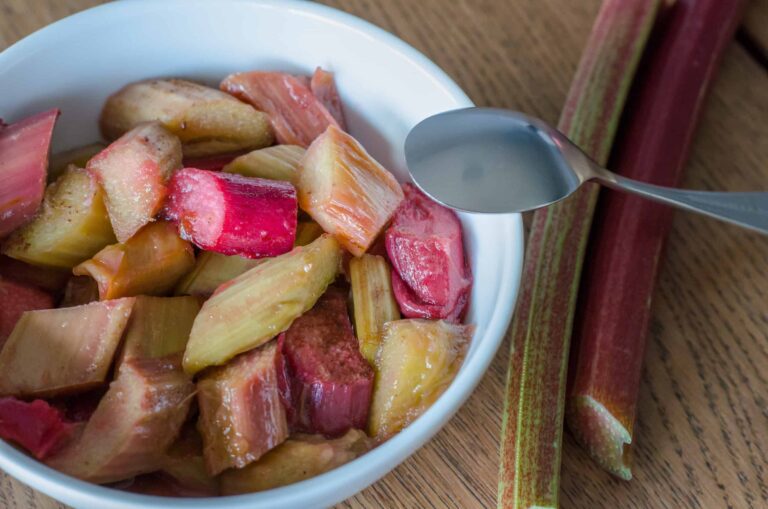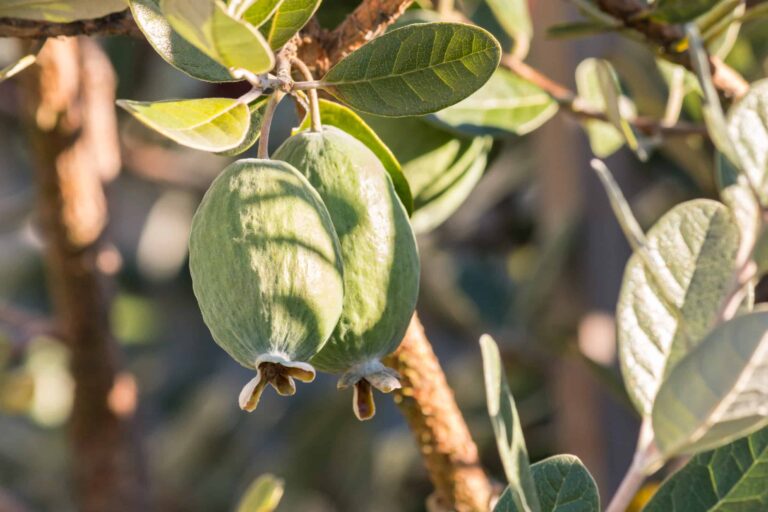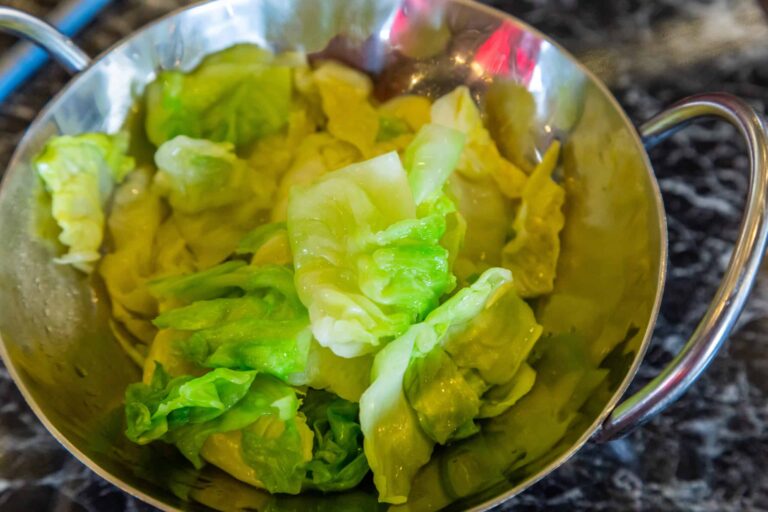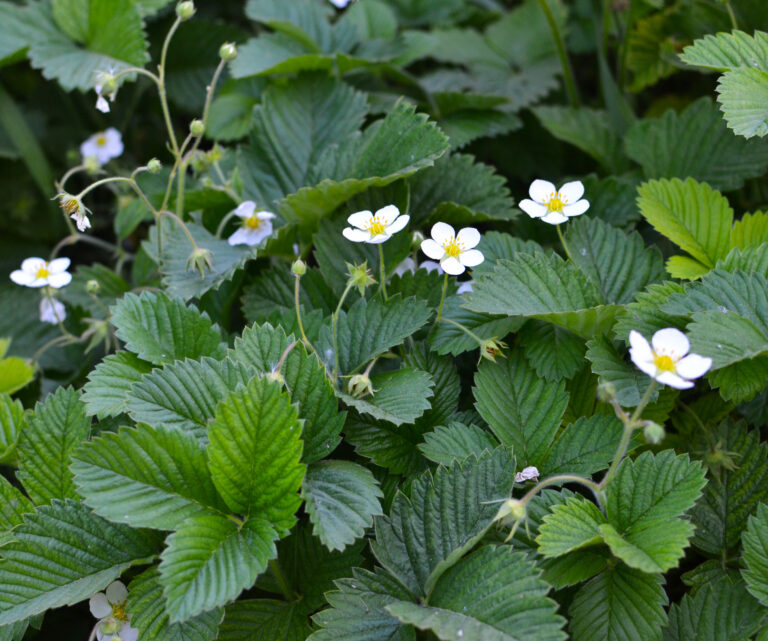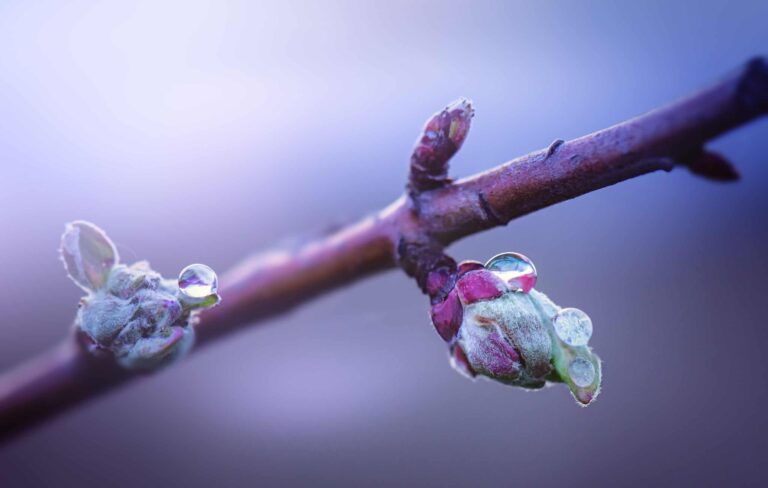Ways to Serve Blackberries
Blackberry, brambleberry, dewberry, boysenberry, loganberry, marionberry, olallieberry: blackberry is the collective name for a large group of fruits in the same genus. Blackberries are also called brambles and brambleberries, particularly in England.
The boysenberry, loganberry, marionberry, and ollalieberry are common names for popular blackberry varieties or hybrids ‘Boysen’, ‘Logan’, ‘Marion’, and ‘Olallie’.
Dewberries are almost indistinguishable from blackberries. The two are close cousins.
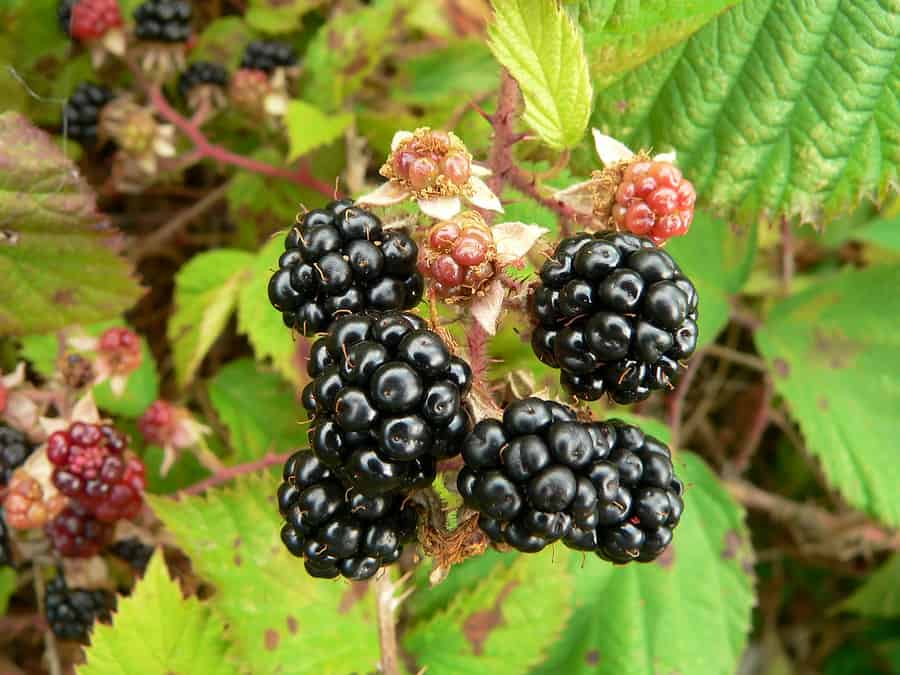
Ripe blackberries are sweet and very juicy. They can be eaten uncooked or cooked. Blackberries are a featured ingredient in tarts, pies, ice cream, fruit salads and compotes, crisps and cobblers, pudding, and preserves.
Fresh uncooked blackberries can be eaten fresh out of hand or topped with milk or cream and sugar as a breakfast dish, snack, or dessert.
Blackberries are sweetest after they turn from bright red to blackish red and then black. Blackberries are extremely fragile and do not stand up to refrigeration for more than a day or two let alone travel or shipping.
Favorite blackberry recipe
How to Make Blackberry Ice Cream
Types of blackberries
The blackberry, dewberry, boysenberry, loganberry, marionberry, and olallieberry can be freely substituted for one another or combined in recipes.
Here’s how these berries compare:
- Blackberry. There are more than 30 varieties. Medium to large round to oblong berries from 1 to 1½ inches long and about ½ inch in diameter. Black when ripe with soft, juicy, sweet flesh.
- Boysenberry. Blackberry-raspberry hybrid with fruit 1¼ inches long or more. Dark red to purplish-black skin and a delicate sweet-tart juicy flesh. Suggestive of raspberries. Developed in California in the early twentieth century.
- Dewberry. Not a blackberry but closely related. Large purple to black berries reminiscent of raspberries and sweeter than a blackberry. Popular in Europe. Eat raw or used in cobblers and jams.
- Loganberry. Large, cone-shaped fruit to 1¼ inches long. Dull maroon skin with firm, very juicy flesh that is tart until fully ripe. Use for preserves and pies. A blackberry-raspberry hybrid developed in California in the late nineteenth century.
- Marionberry. Medium to large blackberry-raspberry hybrid. Black skin and medium firm fruit with excellent wild blackberry flavor. Favored for canning, pies, and jams.
- Olallieberry. Large blackberry-raspberry hybrid, bigger than the boysenberry. Black, glossy skin with fragrant sweet fruit. Great in pies and made into preserves and jams.
Clearly, blackberries and raspberries have several offspring in common. If you sometimes get blackberries and raspberries confused, here’s the way to tell them apart: when a blackberry is picked it comes off the plant with its receptacle, the solid center, intact. When a raspberry is picked, the fruit cluster comes away but the receptacle stays behind.
Blackberry harvest season
The peak harvest season for blackberries is early summer to late summer. The peak season for boysenberries and marionberries is late summer.
Amount. One pound of blackberries equals about 4 cups.
Choosing blackberries
Select firm, plump, glossy full-colored berries. Avoid overripe berries that are soft and may be moldy or leaky. If the hulls are still attached, the berries are immature and were picked too early. The flavor of immature berries will be tart.
Storing blackberries
Blackberries are best used immediately. They are very perishable and do not stand up well to handling. Do not expose them to the sun or leave them at room temperature for any length of time. Refrigerate blackberries unwashed, lightly covered, and preferably in a single layer. Use refrigerated blackberries within 1 or 2 days.
Blackberries do not continue to ripen after picking.
Preparing blackberries
Rinse blackberries just before use. They absorb water so it is best to not wash them in advance. Place berries in a bowl of water and swish to remove dirt then lift and gently pat dry with a paper towel.
Freeze blackberries whole or puréed with the seeds removed and with or without sugar. Spread blackberries in a single layer on a cookie sheet to freeze. Once frozen solid, store them in an airtight container.
Cooking blackberries
Make blackberry jams and preserves adding tart apples to increase pectin content.
Ways to serve blackberries
- Add to fruit salads, crêpes, and tarts.
- Makes a tasty topping for hot or cold breakfast cereal.
- Serve with ice cream, yogurt, or fresh cream, and add brown sugar.
- Purée with a little sugar and serve raw as a dessert sauce for fruit tarts or ice cream.
- Use to make jam, jelly, preserves, syrup, juice, wine, and brandy.
- Use to make tarts, pies, compotes, shortcakes, crisps, cobblers, and puddings.
- Blackberry coulis can be used as a garnish or as a topping on cakes, puddings, ice cream, sorbets, and custards. Blackberry coulis is prepared by puréeing the berries in a food processor and then passing the mixture through a sieve in order to remove the numerous seeds.
Blackberry flavor partners
Blackberries have a flavor affinity for cream, custard, lemon, lime, mint, pork, rose, sour cream, sugar, turkey, walnuts, white chocolate, and yogurt.
Blackberry nutrition
Blackberries are high in vitamin C. One cup of blackberries has about 85 calories.
The botanical name for the blackberry is Rubus fruticosus. The botanical name for the European dewberry is Rubus caesius.
About blackberries
A blackberry is botanically speaking not a berry but an aggregate fruit, a clump of individual fruits, called drupelets. Drupelets contain a tiny seed.
The blackberry or bramble is a prickly deciduous shrub or vine that can grow to as tall as nine feet. Boysenberries, loganberries, marionberries, and olalliberries are more trailing than upright. Brambles thrive in regions where the summers are not too hot and the winters are not too cold.
Blackberries are native to Europe and the Mediterranean region where they have grown wild for several thousand years. The wide cultivation and cultivar development of blackberries began both in Europe and North America just about 150 years ago.
Also of interest:
How to Make Blackberry Ice Cream.
Related articles:
Planning the Home Fruit Garden
Garden Planning Books at Amazon:
- Vegetable Garden Almanac & Planner
- Kitchen Garden Grower’s Guide Vegetable Encyclopedia
- Vegetable Garden Grower’s Guide
- Tomato Grower’s Answer Book
More kitchen tips:
Bring your harvest to the table. Kitchen prep tips and easy recipes for the vegetables you grow. Click below for vegetable prep and recipes you can use now.
- Almonds
- Apples
- Apricot
- Aprium
- Artichoke
- Arugula
- Asparagus
- Avocado
- Bamboo Shoots
- Banana
- Basil
- Beans, Dried
- Beans. Long
- Beans, Shell
- Beans, Snap
- Beets
- Bitter Melon
- Blackberry
- Bok Choy
- Broccoli
- Broccoli Raab
- Brussels Sprouts
- Cabbage
- Cardoon
- Carrots
- Cauliflower
- Celeriac
- Celery
- Chard
- Chayote Squash
- Cherimoya
- Cherries
- Chestnut
- Chickpea
- Chinese Cabbage
- Chives
- Cilantro
- Citron
- Clementine
- Collards
- Coriander
- Corn, Sweet
- Corn, Baby
- Corn Salad, Mache
- Cranberry
- Cress
- Cucumber
- Daikon
- Dandelion
- Dill
- Eggplant
- Endive, Belgian
- Endive and Escarole
- Fava Beans
- Fig
- Florence Fennel
- Garlic
- Ginger
- Grapefruit
- Grapes
- Guava
- Horseradish
- Jerusalem Artichoke
- Jicama
- Jujube
- Kale
- Kiwifruit
- Kohlrabi
- Kumquat
- Leeks
- Lemongrass
- Lemons
- Lettuce
- Lime
- Mache (Corn Salad)
- Mandarin Orange
- Mango
- Maple Syrup
- Marjoram
- Melons
- Michihili
- Mint
- Mizuna
- Mushrooms
- Mushrooms, Cremini
- Mustard Greens
- Napa Cabbage
- Nectarine
- Okra
- Olives
- Olive oil
- Onions
- Oranges
- Oregano
- Parsley
- Parsley Root
- Parsnips
- Passion Fruit
- Pawpaw
- Peaches
- Pears
- Peas, Garden Snap
- Peas, Snow
- Pei Tsai
- Peppers, Chili
- Peppers, Sweet
- Persimmon
- Pineapple
- Pineapple Guava
- Plantain
- Plums
- Pluots
- Pomegranate
- Potatoes
- Prickly Pear
- Pumpkin
- Quince
- Radicchio
- Radishes
- Raspberries
- Rosemary
- Rhubarb
- Rutabaga
- Sage
- Salsify
- Sauerkraut
- Savory
- Shallots
- Sorrel
- Spinach
- Squash, Summer
- Squash, Winter
- Strawberries
- Sunchokes
- Sunflower
- Sweet Potato
- Swiss Chard
- Tangerine
- Taro
- Tarragon
- Thyme
- Tomatillo
- Tomato
- Turnip
- Turnip Greens
- Yams


